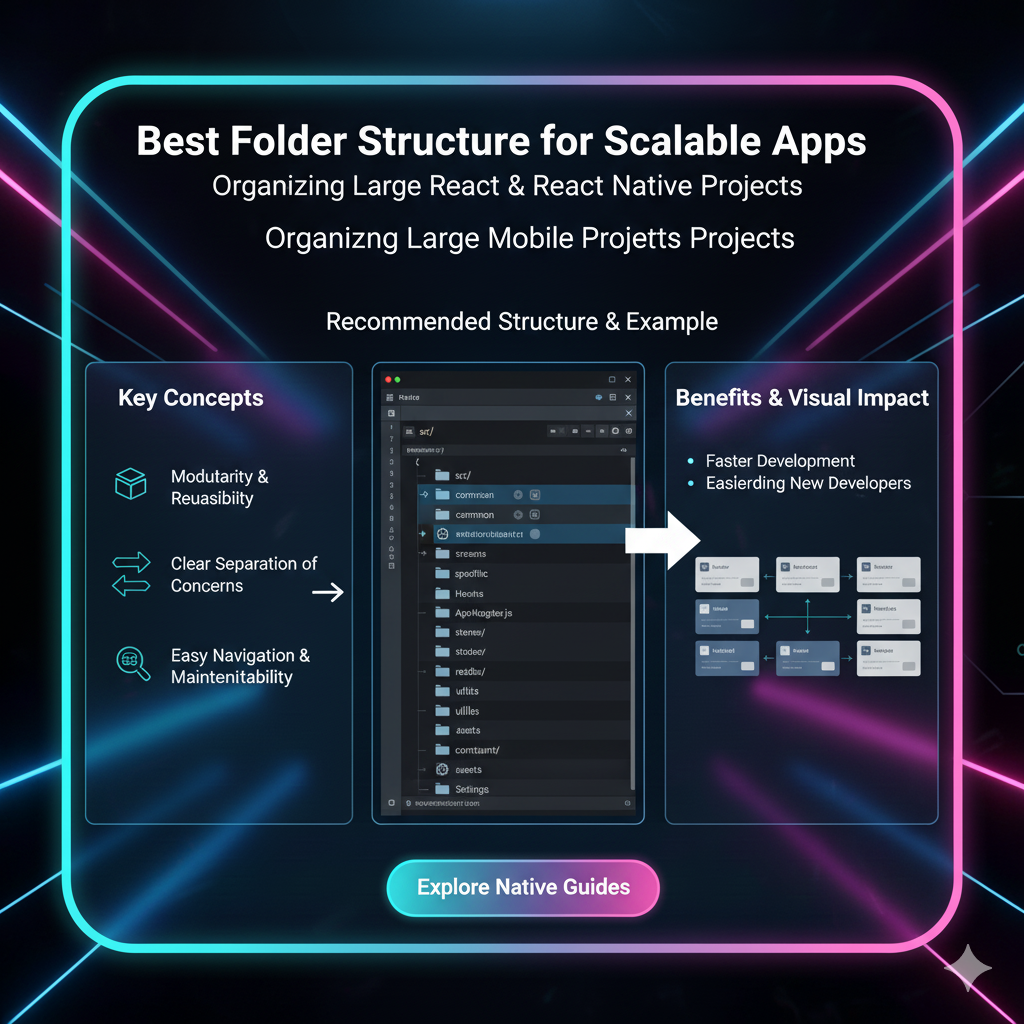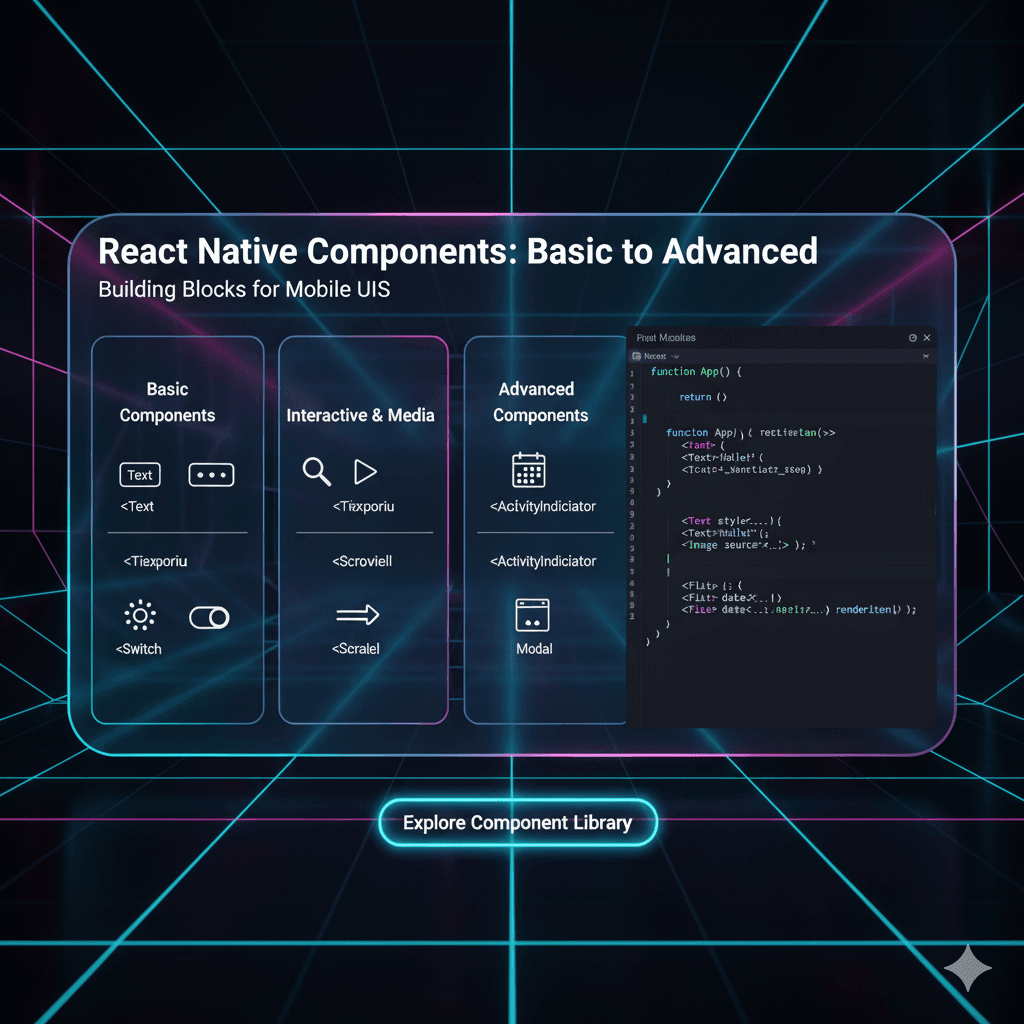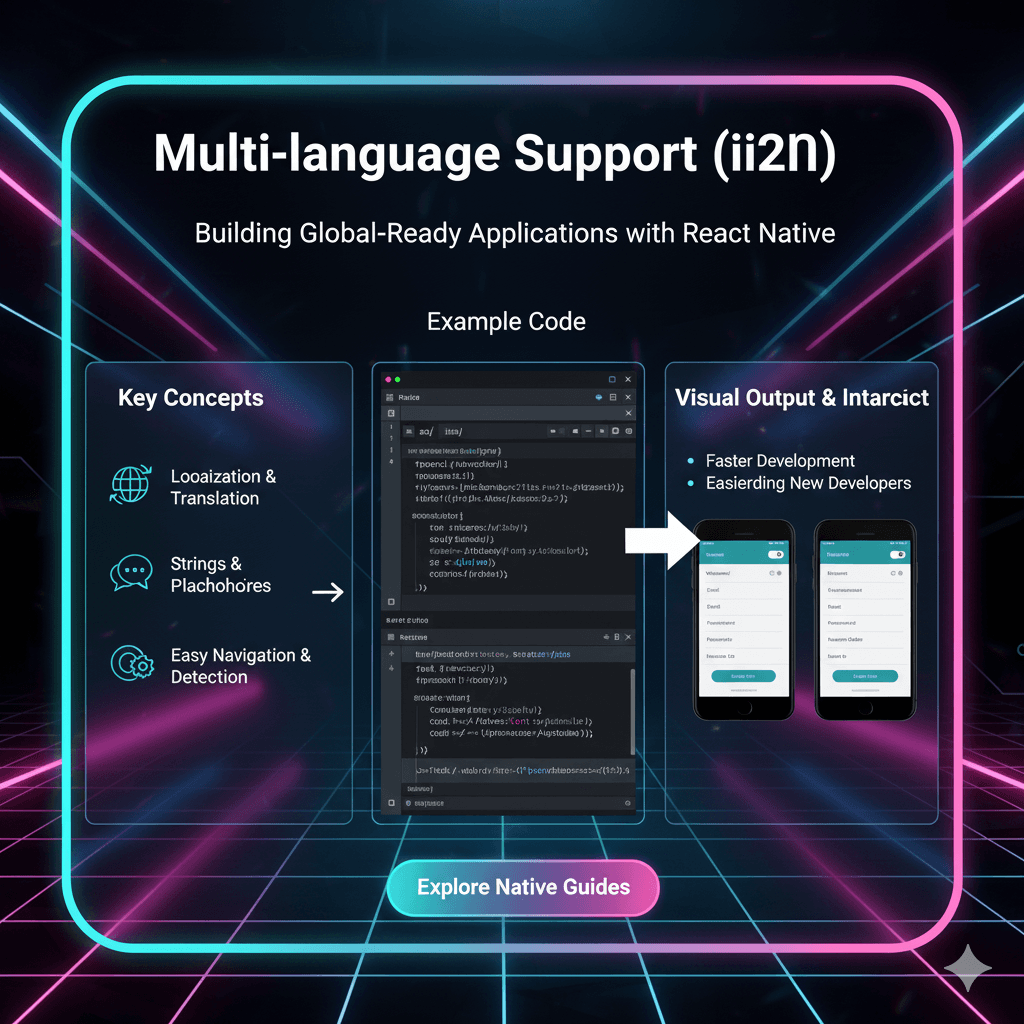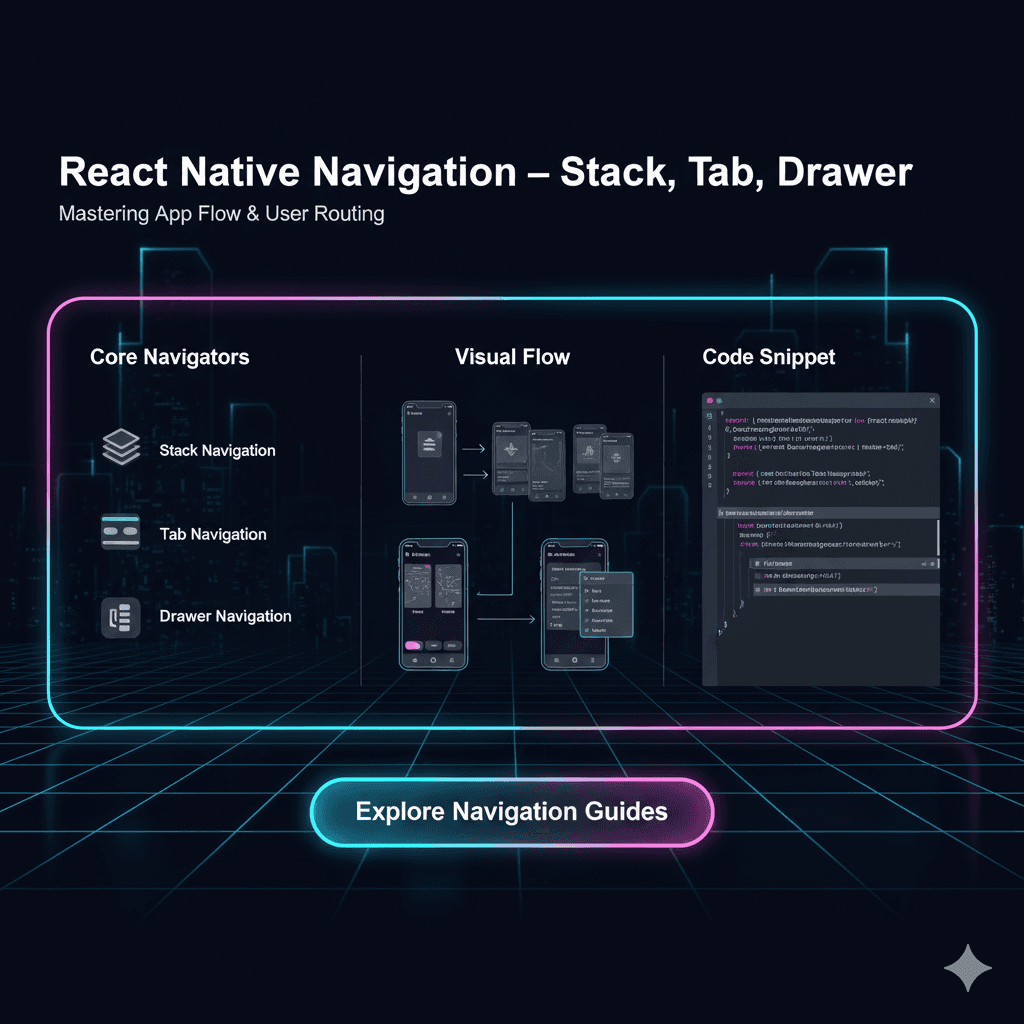Tame the Chaos: The Ultimate Guide to Scalable App Folder Structure

Struggling with messy code? Learn the best folder structures for scalable apps (MERN, etc.), with real-world examples, best practices, and FAQs. Build apps that don't break. Level up your skills at codercrafter.in!

Tame the Chaos: The Ultimate Guide to Scalable App Folder Structure
Tame the Chaos: The Ultimate Guide to Scalable App Folder Structure
Alright, let's be real. We've all been there.
You start a new project, full of hope and caffeine. You create a script.js, an index.html, and maybe a styles.css file. It's simple, it's clean. Fast forward three months, and your project looks like a digital hoarder's basement. Files are everywhere. You have script_final_v2_updated_REALLYFINAL.js, a components folder inside another components folder, and you spend half your day just finding the code you need to change.
Sound familiar? You're not alone.
This mess isn't just annoying; it's a business killer. It slows down development, makes onboarding new developers a nightmare, and introduces bugs when you can't track dependencies. The difference between a messy structure and a clean, scalable one is the difference between a side project that fizzles out and a robust application that can handle millions of users.
So, how do the pros do it? How do companies like Netflix and Airbnb keep their massive codebases organized? They use a deliberate, scalable folder structure from day one.
In this deep dive, we're going to break down exactly how you can do that too. We'll move beyond the basics and look at structures that grow with your app.
Why Bother? The "So What?" Factor
Before we dive into the "how," let's solidify the "why." A good folder structure is like a well-organized toolbox. You don't have to dig through a pile of wrenches to find a screwdriver.
Maintainability: Fixing bugs and adding features is 10x faster when you know exactly where everything lives.
Scalability: Your structure can accommodate new features without becoming a mess. Adding a "Stories" feature to your social app? Just create a new
storiesmodule.Collaboration: When your team is on the same page, they don't step on each other's toes. A clear structure is like a universal map for your codebase.
Testability: It's way easier to write unit tests when your code is logically separated and not a tangled mess.
From Chaos to Clarity: Common Structural Patterns
There's no single "perfect" structure, but there are proven patterns. The best one for you depends on your project's size and complexity.
Pattern 1: Grouping by File Type (The Beginner's Trap)
This is where most of us start. It looks like this:
text
/src
/components
Navbar.jsx
Button.jsx
Card.jsx
/pages
Home.jsx
Profile.jsx
/utils
api.js
helpers.js
/styles
Home.css
Profile.cssThe Good: It's simple to understand for tiny projects.
The Bad: It scales horribly. Imagine having 50 components in one folder. Nightmare fuel. Also, related files (e.g., Profile.jsx and Profile.css) are separated, which becomes confusing.
Pattern 2: Grouping by Feature (The MVP for Scalability)
This is where things get interesting. Instead of grouping by what a file is, you group by what it does. You create self-contained modules for each feature of your app.
Let's say you're building a social media app. Your structure could look like this:
text
/src
/features
/auth
components/
pages/
hooks/
services/
index.js
/profile
components/
pages/
hooks/
services/
index.js
/posts
components/
pages/
hooks/
services/
index.js
/shared
/components (UI components like Button, Input)
/hooks (custom hooks like useLocalStorage)
/utils (generic helpers)The Good: This is incredibly scalable. Everything related to the "Posts" feature is in one place. New developer on the team? Tell them to work on the "profile" feature, and they know exactly where to look. It also promotes separation of concerns.
The Bad: It can be overkill for very small apps.
Pattern 3: A Hybrid Approach (The Real-World Standard)
In practice, most large-scale applications use a hybrid of Pattern 2 and other concepts. A very common and effective structure for a Full Stack MERN app looks like this:
text
/my-app
/client # Frontend (React, Vite, etc.)
/public
/src
/assets
/components # Shared UI components
/features # Feature-based modules
/auth
/posts
/hooks # Shared custom hooks
/contexts # React contexts
/lib # API client configuration, etc.
/pages # Or /views, for routing
App.jsx
main.jsx
/server # Backend (Node.js/Express)
/config # Database, environment configs
/controllers # Request handlers
/models # Database models (Mongoose schemas)
/routes # API endpoints
/middleware # Custom middleware (auth, error handling)
/utils # Helper functions
index.js # App entry point
package.jsonThis structure clearly separates the frontend and backend, which is crucial for understanding and deployment. The frontend uses a feature-based approach within its src folder, while the backend follows a classic MVC-like pattern.
Deep Dive: A MERN Stack Example
Let's make this concrete. Imagine we're building a blog with the MERN stack (MongoDB, Express, React, Node.js). Here’s how we could structure it using the hybrid approach:
Frontend (/client/src):
text
/src
/features
/articles
components/ArticleList.jsx, ArticleCard.jsx
hooks/useArticles.js # Custom hook for fetching articles
pages/ArticlesPage.jsx
index.js # Public API for the feature
/admin
components/
hooks/
pages/
index.js
/shared
/components
UI/Button.jsx, Modal.jsx
Layout/Header.jsx, Footer.jsx
/hooks
useLocalStorage.js
/contexts
AuthContext.jsx
/pages
HomePage.jsx
AboutPage.jsx
App.jsx
main.jsxBackend (/server):
text
/server
/config
db.js # MongoDB connection
/models
Article.js # Mongoose Model
User.js
/routes
articleRoutes.js # All /api/articles endpoints
userRoutes.js # All /api/users endpoints
/middleware
auth.js # JWT verification middleware
errorHandler.js # Central error handling
/controllers
articleController.js # Functions for getArticles, createArticle, etc.
userController.js
.env
server.js # App entry pointSee how clean that is? The articleRoutes.js file uses the articleController.js functions, which in turn interact with the Article.js model. The frontend's useArticles hook calls the backend's /api/articles endpoints. It's a beautiful, organized flow of data.
Best Practices to Live By
Be Consistent: This is rule #1. Pick a structure and stick with it across the project. Use a linter (like ESLint) and formatter (like Prettier) to enforce style.
Keep it Flat, Avoid Deep Nesting: A structure like
src/components/common/ui/forms/input/TextInput.jsxis a pain. Try to keep your folders shallow.Use
index.jsFiles Wisely: Anindex.jsfile in a folder can be used to export all the modules from that folder. This creates a clean "public API" for your feature. Instead of importing../../features/posts/components/PostCard, you can simply import{ PostCard } from '../../features/posts'.Separate Business Logic from UI Logic: Your React components should be dumb. They should handle the UI. All the data fetching, state management, and complex calculations should live in custom hooks, contexts, or state management libraries. This makes your code infinitely more testable.
Name Things Clearly: A file named
Component1.jsis useless. Name itUserRegistrationForm.js. A folder namedstuffis a crime. Name itanalyticsDashboard.
Building scalable applications isn't just about writing code; it's about architecting a system that can evolve. A solid folder structure is the foundation of that architecture. It's what separates a hobbyist from a professional engineer.
To learn professional software development courses such as Python Programming, Full Stack Development, and MERN Stack, where we dive deep into these architectural concepts and much more, visit and enroll today at codercrafter.in. Our project-based curriculum is designed to make you industry-ready.
FAQs
Q1: Is this structure only for React?
Nope! The principles are framework-agnostic. You can apply the same feature-based or hybrid logic to Vue, Angular, or Svelte projects. The specific folder names might change, but the philosophy remains.
Q2: What about state management libraries like Redux?
Great question! In a feature-based structure, you would colocate your Redux slices (or Zustand stores) within the feature folder. For example, /features/posts/postsSlice.js.
Q3: My project is small. Should I still do this?
For a very small project (under 10 files), the "grouping by type" pattern is okay. But the moment you think your project might grow, or if you're working with even one other person, start with a feature-based or hybrid structure. It's a good habit that pays off.
Q4: How do I convince my team to refactor our messy project?
Start small! Pick one new, small feature and build it using the new structure. Show them how much easier it is to find things and work in isolation. A live demo of efficiency is the best argument.
Conclusion
Think of your folder structure as the blueprint for your application's future. A shaky blueprint leads to a building that's expensive to modify and dangerous to live in. A solid, well-thought-out blueprint allows you to add new floors and wings with confidence.
Don't let your passion project get buried under its own complexity. Start your next project with intention. Plan your folders before you write your first line of code. Your future self, your teammates, and your product manager will all thank you for it.
Now go forth and organize your code! And if you want to master these skills systematically, check out the comprehensive courses at codercrafter.in.








